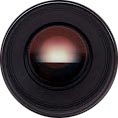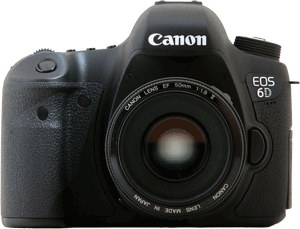Let's Define Digital SLR Terms
It's important to be able to define digital SLR terms - at least the basic ones - before you start trying to compare different cameras.
If I asked you what ISO range you'd like your camera to have or what expectation you have for its continuous drive, would you know what I was asking?
If not, then you've found yourself on the right page.
It's critical that you have a least a basic understanding of some of the digital SLR terms that are defined below, because this will help ensure that you don't get a camera with gobs of features that you'll never leverage.
I'm not saying that you become an expert in digital SLR technology - just know enough so that you can compare different cameras objectively.
Any time I read the specifications of a shiny new DSLR I read it with a critical eye - rather than immediately grabbing my credit card because the camera has 50 megapixels, I can consider whether or not this is something I really NEED.
As I define digital SLR terms for you in the pages that follow I hope that you are able to do the same.
Digital SLR Terminology
The Digital SLR Guide is for beginning photographers, and the definitions that I have written reflect this. Those visitors seeking out more in-depth information than I provide can define digital SLR terms with help from Wikipedia.
Take a deep breath. Relax. Hum a few bars of your favorite tune.
This will be easy for you to understand.
It's not rocket science, it only seems that way when people define digital SLR terms with charts, tables and graphs.
The contents of this "digital SLR dictionary" are written in plain English and make no assumptions about your level of photographic expertise.
Since photography is a visual medium, you won't just be reading a lot of text - I've included plenty of illustrative photos to help make these features clear.
- Megapixels - Cameras with more megapixels give you the freedom to make huge prints and to crop your photos, but they do not necessarily have higher image quality.
- ISO and Image Noise - Increasing the ISO setting lets you take clear photos in dim light without having to use a flash, but it also degrades the image quality.
- Dust Control - Dust that lands on an SLR sensor appears as small black spots in every photo you take. Dust controls systems attempt to prevent and eliminate this.
- Image Stabilization - There are two types of stabilization: one that's included inside the camera and one that's inside the lens. Regardless of the type, stabilization helps to eliminate blur in your photos caused by camera shake.
- Live View - With a live view system, you can compose photos using the LCD screen on the back of the camera in addition to the viewfinder.
- Dynamic Range - Your eyes have exceptional dynamic range and can see details in a scene even when there's extreme contrast. Unfortunately, an SLR doesn't work quite as well as your eyes.
- HDSLR- An HDSLR is a single camera that can capture both still images and High Definition (HD) video.
- Crop Factor - A digital SLR sensor is smaller than a frame of 35mm film, so only a portion of the image that passes through the lens is captured by the sensor.
- Autofocus - Autofocus systems can include anywhere from 9 to 59 individual focus points. More important than the number of points is the speed and accuracy of the system.
- Continuous Drive - A continuous drive lets you take multiple photos in rapid succession. More expensive cameras have faster continuous drives.
- JPG vs. RAW - JPG is the standard format for digital images, and is easy to e-mail, upload and print, but RAW offers significantly more creative freedom.
- Aspect Ratio - Wonder why your digital prints never turn out exactly like the image on your computer monitor? The culprit is aspect ratio.
Moving On
Once you're able to define digital SLR terms with some measure of confidence, it's time to move on to Step 3: comparing digital SLR cameras.
In the next step, you'll start your digital SLR camera research and will begin to match the features that each camera offers to your specific photographic needs.
Join Our Community!
- Learn more about your digital SLR camera
- Get other opinions about camera models
- Share your photos and get feedback
- Learn new DSLR tips and tricks



